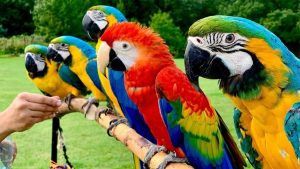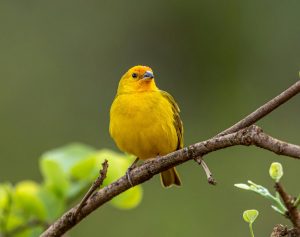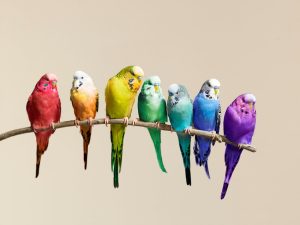The Cockatiel (scientific name: Nymphicus hollandicus) is one of the most popular pet parrot species, famous for its friendly, lovable personality and communication skills. If you’re looking for a pet parrot to own, the Cockatiel is the perfect choice. In this article, KnowAllAnimals will join you in exploring the key features and care instructions for this parrot species.
Scientific Classification:
- Kingdom: Animalia
- Phylum: Chordata
- Class: Aves
- Order: Psittaciformes
- Family: Cacatuidae
- Subfamily: Nymphicinae
- Genus: Nymphicus Wagler, 1832
- Species: N. hollandicus
1. Where do Cockatiels Come From?
The Cockatiel’s scientific name is Nymphicus hollandicus, and its origin is primarily from Australia. They are found scattered across the arid and semi-arid regions of this continent, particularly from the west to the south. The natural habitat of this parrot species is typically in areas with sparse vegetation, wide grasslands, and scrubland.
They are known for their high adaptability to different environments, which has made the Cockatiel a popular bird not only in Australia but in many other countries worldwide. With the development of the pet industry, they have been bred and crossbred to create many different color variations, attracting the interest of many bird enthusiasts.
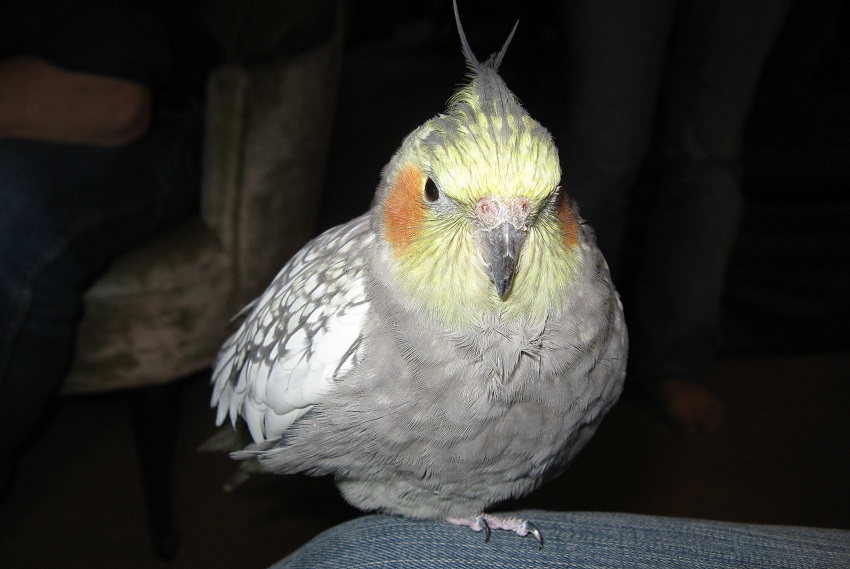
2. Physical Characteristics of the Cockatiel
The Cockatiel is a small bird with an average size of 30-33 cm (12-13 inches) and a weight ranging from 80-120 grams (2.8-4.2 ounces). Their appearance is easily recognizable by their beautiful and diverse coat of feathers. Typically, a light gray color dominates their upper body, while the lower body is a bright white. Their most prominent feature is the orange or yellow patch on their head and cheeks, which gives them a unique cap-like look.
Color Variations
Cockatiels have many interesting color variations:
- White Cockatiel: The most common type, with a pure white coat.
- Gray Cockatiel: They have the characteristic light gray color of the species.
- Yellow Cockatiel: This type has a yellow color that ranges from light to dark, often appearing in many parts of the body.
- Cinnamon Cockatiel: This type combines a cinnamon brown color with other colors.
- Mutant-Colored Cockatiel: Through selective breeding, unique colors like blue, purple, and black have been created.
In addition to their diverse colors, Cockatiels also possess many outstanding physical features. Their legs are gray and have the ability to grip branches firmly thanks to their flexible foot structure. The Cockatiel’s beak is quite strong, with a horn-gray or dark-gray color, which makes it easy for them to shell seeds and eat hard foods.
When raising them in captivity, proper health care and nutrition are very important to ensure they remain healthy and develop well.
3. Cockatiel Temperament
Cockatiels are loved not only for their appearance but also for their gentle and friendly personality. They love to interact with humans and other birds. Cockatiels often show their happiness through actions like dancing, singing, and calling for attention from their owners.
- Affectionate: One of the biggest attractions of the Cockatiel is its ability to form a close bond with its owner. When they are well-cared for and given a lot of interaction, they become very loving and loyal. From sitting on their owner’s shoulder to chirping and playing, Cockatiels always provide a sense of closeness and friendliness.
- Intelligent: Cockatiels are a very intelligent species of parrot and are quick learners. They can remember and respond to signals from their owners. Training a Cockatiel to perform simple commands or mimic sounds also brings a lot of joy to both the owner and the bird. However, it’s also important to note that if they don’t get enough attention, Cockatiels can become jealous or exhibit negative behavior.
4. Cockatiel Behavior
The natural behavior of Cockatiels includes social activities, foraging for food, and exploring their environment. Here are some interesting facts about their behavior.
4.1. Can Cockatiels Talk?
Cockatiels are known for their ability to mimic sounds, including human speech. However, their speaking ability is not always clear or easy to understand. Some birds can learn many words and simple sentences, while others may only repeat a few words or phrases.
To help your bird learn to speak, you need to be patient and dedicate time to training. Start by teaching them simple words before gradually increasing the complexity of words and phrases. Frequent repetition will help them memorize and mimic more easily.
4.2. Can Cockatiels See in the Dark?
Like many other bird species, Cockatiels can see better in low-light conditions than humans. However, they cannot see perfectly in complete darkness. Their eyes have the ability to adapt to changing light conditions, allowing them to see more clearly in the dark than humans can.
In their natural habitat, this ability helps them forage for food and avoid predators in the dark. When raising these birds indoors, you need to ensure they have enough light at night so they can sleep well and stay healthy.
4.3. Breeding Habits
Cockatiels can begin breeding when they reach an age of approximately 12-18 months old. In the wild, they typically build nests in tree hollows or caves. When raised in captivity, you need to provide them with a nest box to use for breeding.
Cockatiels typically lay 4-6 eggs per clutch. The incubation period lasts about 18-21 days. The young will hatch and be cared for by their parents for about 5-6 weeks before they can find food on their own. Caring for young Cockatiels requires a lot of effort and patience. You need to ensure they are provided with enough food and water, and that their cage is kept clean to prevent infections.
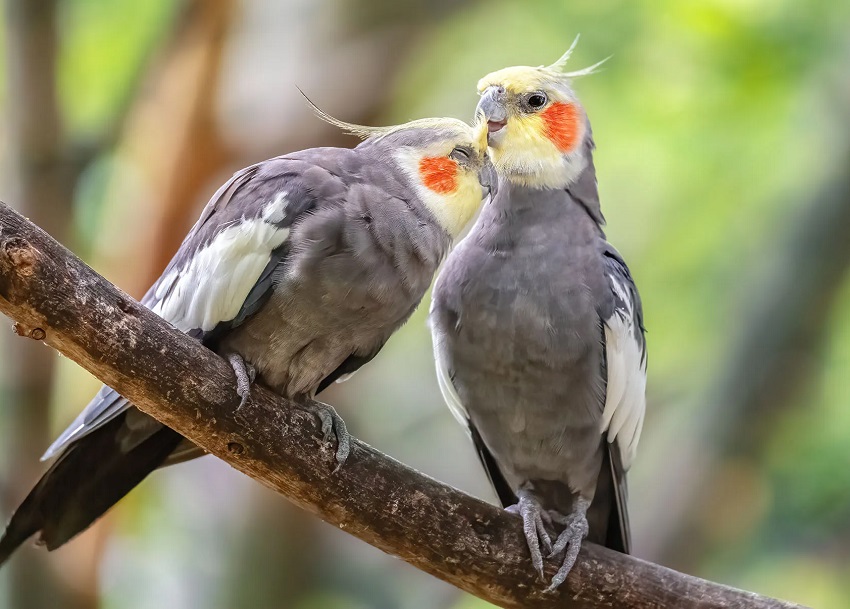
5. Cockatiel Care and Diet
Proper care and feeding of a Cockatiel are essential to ensure their long-term health and development. Here are some specific guidelines on diet, housing, and healthcare for Cockatiels.
5.2. What Do Cockatiels Eat?
A Cockatiel’s diet should include seeds, fruits, vegetables, and other nutrient-rich foods. Seeds like sunflower, millet, peanuts, and canola are their main source of energy. You can also supplement their diet with fruits like apples, bananas, watermelon, and oranges. Vegetables like carrots, pumpkins, and various leafy greens are very good for a bird’s health.
In addition, you should also supplement their diet with protein-rich foods like eggs, yogurt, and mixed feed specifically for Cockatiels. It is important to note that Cockatiels can easily become obese if they are given too much fatty food. Therefore, you need to adjust their food intake appropriately to keep them at a healthy weight.

5.3. Housing for Cockatiels
Choosing the right cage is very important to ensure the health and development of your Cockatiel. The cage should be spacious enough to allow them to exercise. A minimum cage size of 60x60x90 cm (24x24x35 inches) is recommended.
The cage should be made of a safe, easy-to-clean material that does not contain any toxic substances. You can choose a cage made of iron, stainless steel, or wood. Additionally, the cage needs to be equipped with necessary items such as food and water bowls, branches for the bird to perch on and sharpen its beak, and toys for entertainment and exercise.
5.4. Cockatiel Health Care
Taking care of a Cockatiel’s health is extremely important to ensure they stay healthy and live a long life. You need to pay attention to their diet, provide enough clean water, keep their cage clean, and regularly monitor their health.
Some basic health care measures include: trimming their claws periodically to prevent them from injuring themselves, and bathing them regularly for hygiene and feather cleanliness. You should also monitor for any unusual signs, such as a decrease in appetite, a change in behavior, or a runny nose. If you notice any of these symptoms, you should take your bird to a veterinarian for a timely check-up and treatment.
5.5. Common Cockatiel Health Issues
Like many other bird species, Cockatiels can suffer from some common illnesses. Here are a few health issues you need to be aware of:
- Respiratory Illnesses: Symptoms often include coughing, sneezing, a runny nose, and difficulty breathing. The cause may be a bacterial or viral infection. If not treated promptly, the illness can lead to more serious problems.
- Digestive Illnesses: Symptoms often include loose stools, vomiting, and a loss of appetite. The cause can be an infection, eating contaminated food, or a sudden change in diet. To prevent these illnesses, you should ensure that your bird’s food is clean and safe.
- Parasitic Infections: Cockatiels are susceptible to parasitic infections from mites, lice, and worms. These parasites can cause symptoms like itching, feather loss, and lethargy. To prevent this, you need to regularly check your bird’s health and keep their cage clean.
- Bone and Joint Diseases: Common bone and joint diseases in older Cockatiels include arthritis and bone fractures. To protect their bone and joint health, you need to provide them with a diet rich in calcium and vitamin D.
- Fungal Infections: Cockatiels are easily susceptible to fungal infections, especially in cages that are damp and lack sunlight. Symptoms of a fungal infection include feather loss, flaking skin, and white or yellow patches on the skin. If you notice these symptoms, you should take your bird for a check-up and treatment.
If you find that your Cockatiel has any signs of illness, you should take them to a veterinarian for a timely check-up and treatment. Early detection and treatment will help your Cockatiel recover quickly and limit dangerous complications.
6. Exercises for Cockatiels
Providing exercise and fun activities is essential for maintaining a Cockatiel’s physical, mental, and intellectual health. These exercises help them stay flexible, strengthen their health, reduce stress, and prevent diseases related to a lack of physical activity.
- Perching on Branches: Offer branches of various sizes and thicknesses to help them exercise their feet, sharpen their beaks, and work their bodies. Natural branches will give the bird a chance to stay active and help prevent boredom when they are in their cage.
- Toys and Entertainment: Equipping your Cockatiel’s cage with toys is very important. Items like slides, ropes, and bells will provide them with opportunities for play and entertainment. These activities not only help them stay physically active but also stimulate their minds and help them develop their cognitive abilities.
Interactive Time with the Owner: Spending time to play and interact with your Cockatiel is a must. You can organize games like letting the bird out of its cage to fly around in a larger space or teaching them simple commands. These activities will not only help improve the bond between you and your bird but also help them develop social skills and emotional stability.
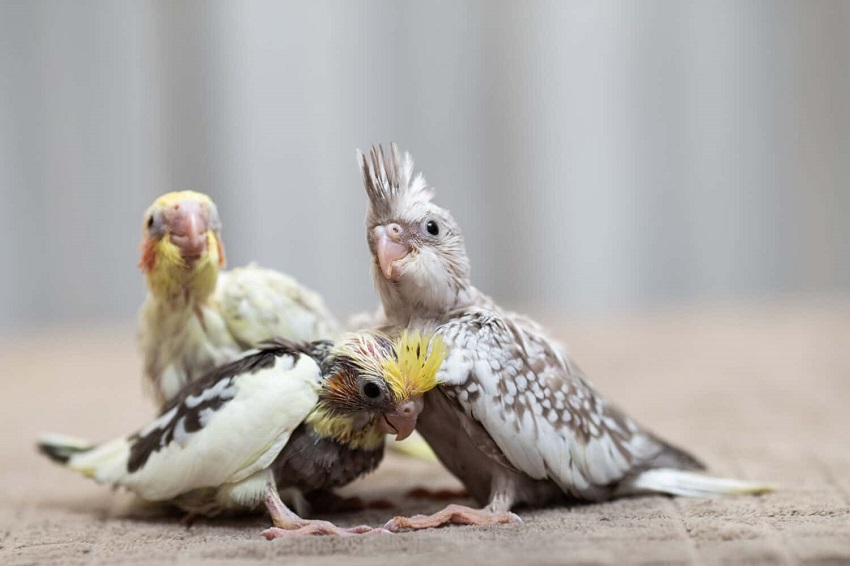
7. How Much Do Cockatiels Cost?
The price of a Cockatiel ranges from $10 to $35 per bird, depending on its feather color, age, and source. Purebred birds with a yellow face and orange-red cheeks are often more expensive. Buyers should choose a bird that is lively, has smooth feathers, clear eyes, and shows no signs of illness.
8. FAQs
1. Are cockatiels good pets for beginners?
Yes, cockatiels are gentle, social, and relatively easy to care for, making them an excellent choice for first-time bird owners.
2. Can cockatiels talk?
While not as talkative as larger parrots, cockatiels can learn to whistle tunes and mimic simple words or sounds, especially males.
3. What do cockatiels eat?
Cockatiels need a balanced diet of high-quality pellets, fresh vegetables (like leafy greens, carrots), some fruits, and occasional seeds as treats.
The Cockatiel is an easy-to-care-for, friendly, and affectionate pet bird with the ability to sing and mimic speech. When owners understand the essentials of housing, nutrition, health care, and training techniques, they will have a charming and lovable feathered companion. Spend time caring for and interacting with your Cockatiel to make them a cherished member of your family.
References: https://en.wikipedia.org/wiki/Cockatiel

